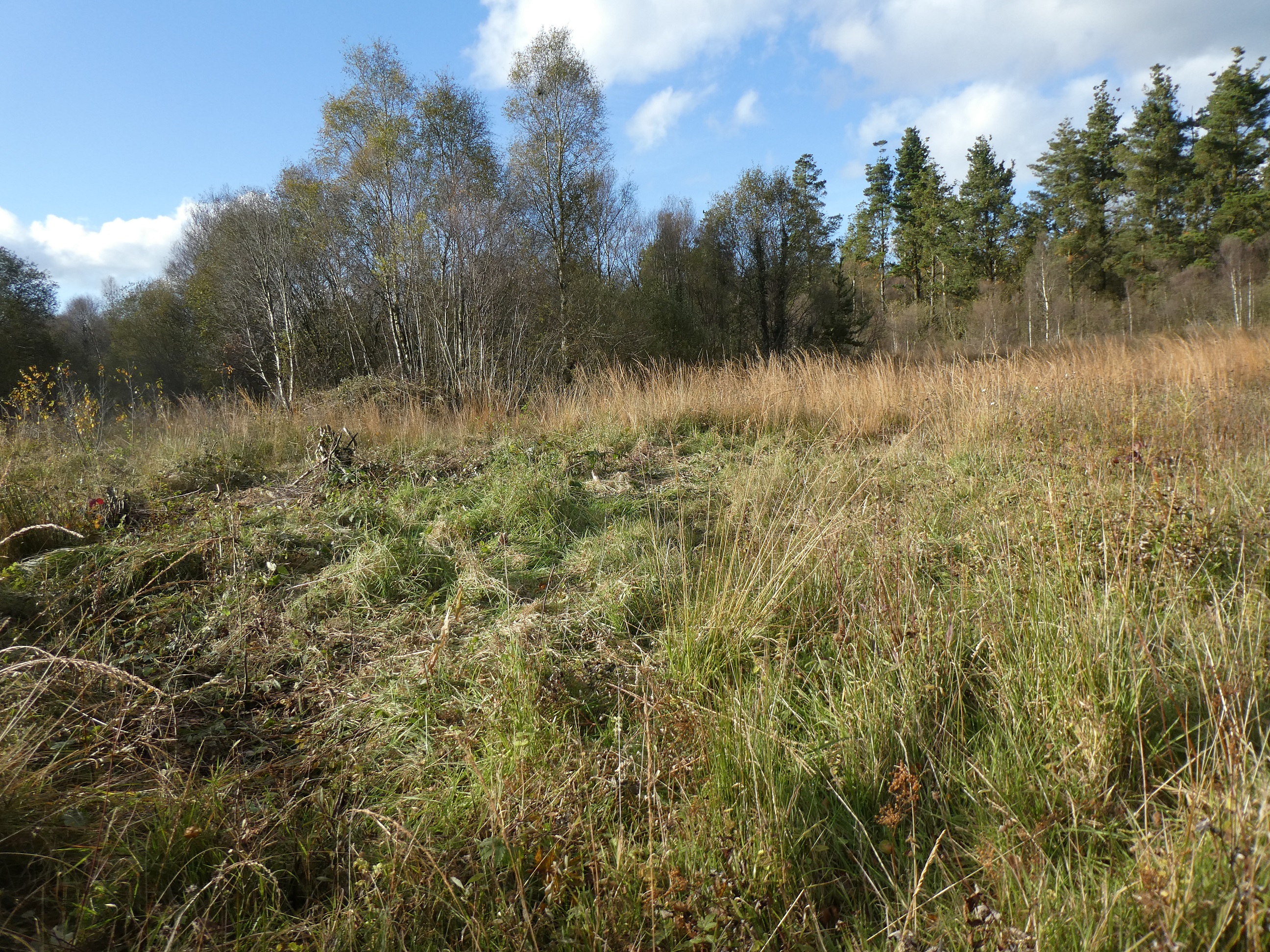A cool, sunny day on Saturday 26th of October made for very pleasant working conditions on our Kildare reserve. An enthusiastic group tackled scrub re-growth from around five years previously. The area we worked on has breeding habitat for Brimstone, Marsh Fritillary, Dark Green Fritillary and Wood Tiger among several other species. The area has a mosaic of habitats packed into a small area attractive to a diverse range of species with very different foodplants and specific micro-habitat needs.
We took a number of steps to cater for all these species. Dense willow and dense birch was cut down but two tree species growing among the birch and willow-Alder Buckthorn and Purging Buckthorn, the foodplants for the larva of the Brimstone butterfly and Holly Blue butterfly were identified and spared. The buckthorns now have more light around them. This makes them more suitable as breeding plants.
By clearing and removing the scrub, we made Common Dog Violet plants, used for breeding by the Dark Green Fritillary butterfly, open to the light. Rough vegetation near the violets was preserved so that the caterpillars will have areas to hide in and to bask on during sunny weather next spring.
Another issue to deal with was a flush of birch saplings. These threaten to out-compete St John’s Wort used by the Wood Tiger caterpillars and Devil’s-bit Scabious used by the caterpillars of the Narrow-bordered Bee Hawkmoth and Marsh Fritillary butterfly. We uprooted these, which yielded readily due to the soft soil.
All uprooted and cut material was placed in a pile to the north to avoid casting a shadow on breeding areas. It was heartening to step back and look at what we achieved and we know our butterflies and moths will thank us for it!
As usual, we had great conversations about a range of subjects, enjoyed the food we brought and shared. Conservation is about people too!
A special thanks to everyone who worked so hard and to all our members and supporters.

Photo J.Harding.

